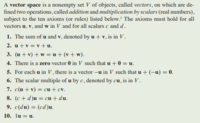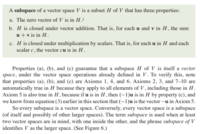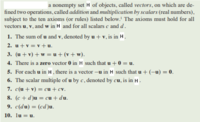HelpNeeder
New member
- Joined
- Feb 17, 2021
- Messages
- 33


I do not understand how we can be sure that axioms 2, 3 and 7-10 are automatically true in H. If that is the case, then axioms 1, 4 and 6 also need to be automatically true because they apply to all element of V, including those in H?
So what I do not understand is why we only have to check if these three properties are true and not the other 7?
Thank you in advance.

